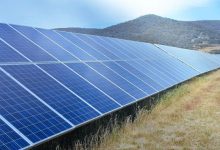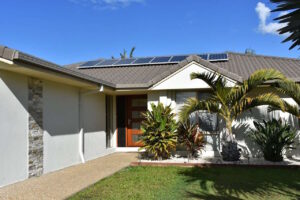European solar trade body SolarPower Europe expects the global solar industry will add nearly 800 gigawatts of new solar over the next five years, bringing the planet’s total solar capacity to 1.3 terrawatts in 2023.
SolarPower Europe published its Global Market Outlook 2019-2023 at Intersolar Europe Tuesday, revealing its near-term and long-term predictions for solar capacity additions.
After 102.4GW was added in 2018, according to the group, in 2019 about 128GW of new solar PV capacity will be added according to its Medium Scenario – translating to growth of around 25%. This, in turn, will increase the globe’s cumulative solar PV capacity to 645 GW.
Looking further afield, SolarPower Europe expects the terawatt mark to be passed in 2022, and its 5-year Global Market Outlook expects nearly 800 GW of new solar capacity to be brought online by the end of 2023, raising total capacity to 1.3 TW.
“2018 was a unique year for the entire global solar industry, as we exceeded the magic installation mark of 100 GW per year for the first time, which led the solar power sector to grow to over 500 GW or 0.5 TW,” said Christian Westermeier, President of SolarPower Europe.
“Last year, we again saw strong cost improvements with solar becoming the lowest-cost power generation source in more and more regions. At the same time, new applications have quickly progressed, such as floating solar, while corporate renewable Power Purchase Agreements have reached a double-digit GW-level, and a market for merchant solar has emerged in several countries.”
SolarPower Europe’s figures for 2018 clash with those of market analysts, though no two figures for 2018 have been found to be the same.
The International Renewable Energy Agency claimed that only 94 GW was installed in 2018, while Wood Mackenzie believes installations for 2018 only reached 97.3.
On the other hand, Bloomberg New Energy Finance reported 107 GW of capacity installed in 2018.
A total of 102.4 GW, however, seems to not only fit the evidence, but is as satisfactory middle-ground as we are likely to expect for 2018.
The main reason for 2018’s slowdown, however, is not up for debate, and is laid entirely at the feet of policy movements made in China to effectively halt installations halfway through the year.
By the end of the year, China still installed 44.4 GW – down 16% on 2017’s figure but well up on some of the doomsaying projects from halfway through the year. Contributing to the lacklustre growth in 2018, according to SolarPower Europe, was stagnant growth in the United States and shrinking markets in India and Japan.
However, in 2018 11 countries installed over 1 GW of solar – bringing the total number of GW-scale countries up from the previous year’s 9, and on its way to 16 in 2019, according to SolarPower Europe.
“Global solar demand continued to grow last year, as new emerging markets have embraced solar’s attractive business case – a clean, versatile and low-cost power generation source,” said Walburga Hemetsberger, CEO of SolarPower Europe. “This market diversification means interest in solar is rising at a rapid pace.”
“In Europe, we have entered a new era of solar growth and with the recently concluded Clean Energy Package, we have a new framework for solar that will see our technology thrive even more in the coming years. We now look to EU member states to put ambitious solar targets in place and ensure robust implementation guidelines in their 2030 National Energy and Climate Plans (NECPs).”











